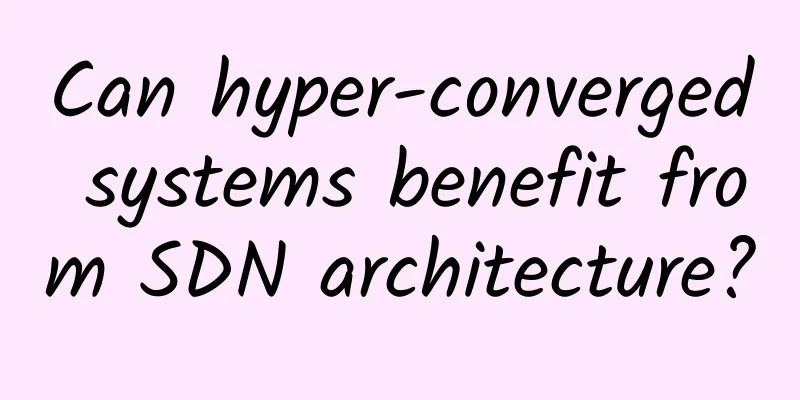Can hyper-converged systems benefit from SDN architecture?

|
Hyperconverged systems are rapidly gaining popularity due to the tight integration of computing, storage, and networking, and the resulting ease of deployment and management.
While tight integration is required, these systems share many of the same networking challenges as other data center deployments, including requirements for scalability, automation, security, and traffic management. In addition, they also need to link to other data center resources in the data center, remote data centers, and the cloud. Software-defined network architectures can alleviate some of the scaling, automation, security, and connectivity challenges of hyperconverged system deployments. Hyperconverged systems integrate storage, computing, and networking into a single system (box or pod) to reduce data center complexity and alleviate deployment challenges associated with traditional data center architectures. Hyperconverged systems include hypervisors, software-defined storage, and internal networks, all managed as a single entity. Multiple pods can be networked together to create shared computing and storage pools. The hyperconverged market is expected to grow rapidly in the coming years, from about $1 billion to more than $5 billion. Hyperconverged system providers include Nutanix, Dell EMC and VMware, as well as HPE, which focus on integrating compute and storage into a single scalable resource. Advantages and challenges of hyperconverged systems Network requirements for hyperconverged systems The network in a hyperconverged system is dedicated to establishing and maintaining communications between the compute and storage elements and is typically proprietary. Some of the key network elements required for a hyperconverged system include:
Software Defined Network Architecture In a software-defined network architecture, the network control plane is abstracted or separated from the underlying network hardware. In addition to abstraction, software-defined networks also include the following properties:
Many aspects of software-defined network architecture involve hyperconverged systems in the data center. For example, it can help connect or manage internal traffic, data center communications, and networks outside the data center. The networking industry currently offers software-defined networking architecture elements to help customers scale and network clusters of hyperconverged systems. Other vendors, including Cisco, HPE and VMware, are supporting communications between hyperconverged systems and other data center and cloud-based elements. |
<<: 10 things to know about LoRaWAN and NB-IoT
Recommend
Ruijie Cloud Desktop supports Beijing's COVID-19 fight
Imported from abroad, confirmed locally, the sudd...
Fiber optic technology breakthrough could increase Internet speeds 100 times
[[247528]] According to foreign media reports, an...
DMIT: $100/year Triple Network CN2 GIA-2GB/40GB/2TB/Los Angeles CN2 GIA
Today, many friends are sharing the last promotio...
5G network construction 80%: 5G robots are about to usher in a new turning point
Recently, according to CCTV News, China had compl...
Megalayer October promotion: US dedicated servers from 199 yuan/month, high-defense servers from 299 yuan/month, optional CN2 line
Megalayer has launched the Golden Autumn October ...
Openness, Inclusiveness, Collaborative Innovation - Network Frontier Technology Forum Held in Beijing
On October 12, 2021, during the 2021 China IPv6 I...
Mastering the "gold mine" of To B resources, operators' path to gold mining in the Internet of Things
Last week, in the article "Why has the Inter...
AlphaVPS: VPS hosting with large hard disk starts from €15/year, AMD EPYC/Ryzen starts from €2.99/month
AlphaVPS was founded in 2013 and is a leading Iaa...
H3C Ao Xiangqiao: SD-WAN will eventually move towards a high-level self-intelligent network
SD-WAN became a "hot word" in China in ...
We will bear the consequences of irresponsible criticism of operators.
There was a problem with the telecom broadband at...
Linux will support new network technology based on Li-Fi
According to phoronix, Li-Fi technology supplier ...
The three-layer switch you know works like this
Why do we say that the Layer 3 forwarding perform...
A simple guide to Wi-Fi, a must-read when buying a router
In this article, we will talk about the wireless ...
HostYun Unicom AS4837 line KVM is available with 15% discount and monthly payment starts from 17 yuan
Earlier this month, we shared the news that HostY...
RackNerd Los Angeles DC02 restock, VPS promotion starts at $9.89 per year
Earlier this month, we shared a summary of RackNe...








![[11.11]80VPS: 50% off all VPS, special VPS annual payment starting from 199 yuan, multiple data centers in Hong Kong/US/Japan/Korea, etc.](/upload/images/67cabd15acc07.webp)
